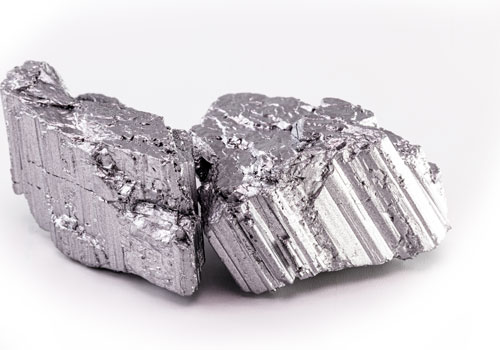Rare earth metals (REMs) play a significant role in the production of electric vehicles (EV technology) due to their unique properties and applications. Four kinds of rare earth metals are used in the production of EV magnets.
Neodymium is a key component in the production of high-strength permanent magnets used in electric vehicles – specifically in EV motors. These magnets provide strong magnetic fields that enable efficient motor performance and contribute to the overall power and torque.
Praseodymium is often combined with neodymium to form neodymium-praseodymium (NdFeB) magnets. These magnets exhibit even greater magnetic strength, allowing for smaller and more efficient electric motors in vehicles.

Dysprosium is added to neodymium-based magnets to enhance their thermal stability.
Electric car motors generate heat during operation, and dysprosium helps maintain magnetic properties at elevated temperatures, ensuring optimal motor performance.
Terbium is another rare earth element used to improve the performance of neodymium-based magnets. Terbium aids in maintaining magnetization at high temperatures, which is crucial for electric car motors subjected to demanding operating conditions.

Rare earth metals are vital for electric vehicle (EV) technology due to their magnetic properties, which enable high motor efficiency, power density, and torque. Electric cars require lightweight and compact motors capable of delivering sufficient power to propel the vehicle. The use of rare earth magnets helps achieve these objectives, contributing to improved overall EV performance.
Rare earth metals are indispensable in this field.
Fuel cells, which provide clean and efficient electricity generation, rely on catalysts containing platinum and other rare earth metals. These catalysts accelerate chemical reactions within the fuel cell, enhancing overall energy conversion efficiency.
Rare earth metals also find applications in hydrogen production, an emerging clean energy pathway. Hydrogen fuel production through water electrolysis often utilises rare earth-based catalysts to improve the efficiency of the process.

Neodymium is used in high strength magnets
The majority of global rare earth production is concentrated in a few countries, making supply chains vulnerable to geopolitical uncertainties. Additionally, the extraction and processing of rare earth elements can have environmental and social impacts if not managed responsibly. Please read documents on our Corporate Governance Page for more information about our approach.
Rare Earth Elements (REEs) comprise of 17 chemical elements that belong to the lanthanide series of the periodic table. Lanthanide elements are silvery-white metals that are generally soft, malleable, and ductile. They have high melting points and are highly reactive, particularly when finely divided.
| Lanthanum (La) | Cerium (Ce) | Praseodymium (Pr) | Neodymium (Nd) | Promethium (Pm) | Samarium (Sm) |
| Europium (Eu) | Gadolinium (Gd) | Terbium (Tb) | Dysprosium (Dy) | Holmium (Ho) | Erbium (Er) |
| Thulium (Tm) | Ytterbium (Yb) | Lutetium (Lu) | Scandium (Sc) | Yttrium (Y) |
Some of the elements, such as gadolinium and erbium, exhibit notable magnetic properties. The lanthanides also possess similar crystal structures and form various colored compounds, which are often used in the production of pigments and dyes.



